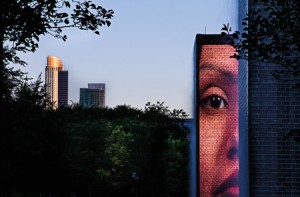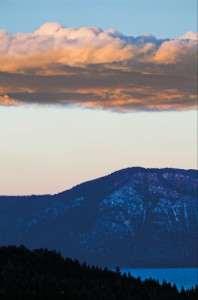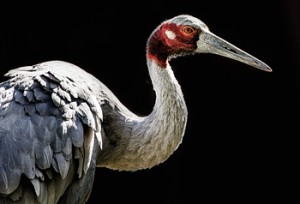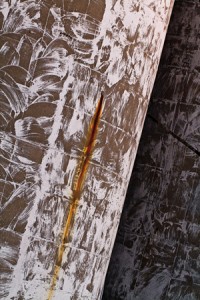This is a modification of a talk I was honored to give on Saturday, Sept. 15, 2012 to the Springfield (IL) Shutterbugs Camera Club.
My first experience with New Salem State Historic Site was in the 1960s, when I was a child and my family came to Springfield on vacation. We camped at New Salem and I was enthralled with the site. Since moving to Springfield in the 1980s, I’ve returned to New Salem many times.
I started photographing at New Salem a few years ago. I’ve always been fascinated by history and by the physical artifacts of history. But, I also enjoy solitude and spending time outdoors, especially in the quiet of the morning or evening and in the winter and off season.
The idea of producing a long term project on New Salem developed gradually.
I think, at some point, I was tromping around New Salem after a snowfall and thought, you know, I really ought to try to take pictures in every season. My first thought was to try to document all the seasons and changes at New Salem. And, that was how it started.
It evolved from there.
I needed a goal and I thought that maybe I could come up with enough pictures for a book. I didn’t really give any thought to whether that was practical or not, but decided it was a worthwhile goal. Even if it was just something I did for myself, it would be something I could say I had done.
I think this idea of giving yourself an assignment and seeing it through is very important. At least it is to me. It gives me some discipline and some direction and helps me focus my efforts.
There is a reason I named my website, UnFocused, and gave it the tagline: Pictures Sharp, Life Not So Much.
That’s a pretty accurate self-assessment. I should be more focused, but at almost 60, it’s probably not going to happen.
So, as I say, I like to give myself assignments. It gives me a feeling of accomplishment. Certainly that’s not always the case, but the New Salem project gave me some discipline, allowed me to explore some new things, helped me to deal with my own inherent shyness (like a lot of photographers, I’m pretty much an introvert who uses his camera as a shield to allow myself to experience things that I might not have the courage to experience otherwise).
When I embarked on this project, I didn’t know where it would go. I had this idea of a book floating in the back of my head, but nothing concrete. The real goal was simply to complete the project and see what I had.
Defining a project is, I believe, also important because it gives you an end point. It forces you to stop somewhere – to say “that is enough†– and then to put it behind you and move on.
I love today’s technology because it opens up so many doors. There is no way I could have brought this to completion even a decade ago.
But today digital technology allows you to shoot hundreds of images…develop and edit them on your home computer…upload them to a custom book printer to print out your sample book…or put together a website…and even produce a PDF version that you can share.
I actually ended up doing all three.
Now, what you probably can’t do, is make any money at it. Or at least, I haven’t figured that one out yet. But really, that’s also liberating.
I am very lucky. I have a full-time job that I like, so I can do this without needing to know how to monetize the work. It never has to make money.
It may not feed my body, but it can feed my soul.
Somewhere along the line I realized that the cost of printing a book would be prohibitive without outside support, so I decided in the meantime to produce a website.
I wanted a site that would be something of a hybrid…sort of a web book but not an “e-book.†Currently, I don’t think the e-book options available for small projects like this really lend themselves to photo books.
I basically designed the site to be comprised of a lot of separate pages, each of which would fit pretty much on a screen and then allow the person to move forward or backward through the pages.
Web hosting is incredibly cheap and accessible today and the interesting thing is that you really can reach more people through the web than you might even if you were successful in getting a work published.
I’m always a little stunned at how many people manage to find my website. I checked the statistics when I was preparing this talk and last week I got 6,000 page requests. That’s absolutely  amazing to me.
Even if you are successful with getting something published or sold, it’s very likely that the actual reach on a website will still be greater.
Having your own website, by the way, can be pretty fun, cool and addictive. I’ve gone into the Apple Store at the Galleria in St. Louis and pulled up my website on a half dozen of the iPads just for the fun of it. When I was working on my website, I’d go into Best Buy and play with the various tablets to see how it looked. The staff was really very patient and helpful.
Anyway, getting back to the project.
At first, the idea was just the four seasons at New Salem.
Then as I started taking pictures and talking to the interpreters, I started getting more interested in the history of New Salem and realized I had to tell a bit about that history and why it was important to Lincoln.
You can go to the Seeing New Salem website to read that, so I won’t repeat it here. But, I was struck by how significant this place was in Lincoln’s life and development.
Lincoln came to New Salem with almost no education…and in just three years he is a state legislator and is mastering the law.
So, over the course of taking pictures at New Salem, the idea evolved into “Seeing New Salem†with multiple meanings.
First, obviously, is just seeing the site itself. I tried to produce a lot of pictures that would be fun to look at.
Second was the idea of seeing the importance of New Salem in the life of Lincoln.
And then, finally, was the idea of really seeing things. Really looking about and seeing the world around you.
I felt like a book just about New Salem might be kind of limited, but if it were also about seeing, then people could enjoy it even after they left New Salem or even if they never came to New Salem.
So many times, as I walked around New Salem I would see people just clicking away on their cameras or phones, as though they were cataloguing the site…take a picture of this cabin…now that one…and that one over there.
A lot of picture taking, but not a lot of seeing.
I wanted to help people who are interested in photography to learn a little more about the medium and to maybe come away from a site like New Salem with pictures that do more than offer a simple catalogue of what happens to be there.
So, I decided to talk a little about the essence of photography and the nature of photographic seeing. Things that I have stolen from John Szarkowski’s The Photographer’s Eye and Stephen Shore in The Nature of Photographs, two of my favorite and I believe essential, books on photography.
To me, details are important. And, in fact, there’s a pretty long tradition in photography of details. A good argument can be made that photography invented the detail.
John Szarkowski in The Photographer’s Eye identifies the detail as one of the five inherent characteristics of photography that define it as a medium. Szarkowski has a section in his book that talks about the early war photographers like Alexander Gardner and Timothy O’Sullivan and Roger Fenton.
He talks about the challenges they faced with their slow cameras in trying to capture the essence of war. Even had they been able to capture the action, centuries of painting could not have prepared them for the chaos that characterizes real wars. The public was accustomed to seeing heroic paintings that summed up the essence of a battle and glorified the commanders.
To quote Szarkowski:
“From the reality before him, he (the photographer) could only choose that part that seemed relevant and consistent, and that would fill his plate. If he could not show the battle, explain its purpose and its strategy, or distinguish its heroes from its villains, he could show what was too ordinary to paint: the empty road scattered with cannon balls, the mud encrusted on the caisson’s wheels, the anonymous faces, the single broken figure by the wall.
“Intuitively, he sought and found the significant detail. His work, incapable of narrative, turned toward symbol.â€
Both Szarkowski and Shore attempt in some fashion to define and differentiate photographs from other visual media. They use overlapping terms, but I think they both arrive at essentially the same point.
Stephen Shore talks about Flatness; The Frame; Time; and Focus;
Szarkowski identifies: The thing itself, the detail, the frame, time and vantage point.
These are essential concepts that I think all good photographers learn to manage. But, I think that over a lifetime, it is the mastery of these elements that can make a good photographer great.
Now, here, let me digress for a minute and just say that I have, ever since I discovered photography, been cursed with the idea that photographs are important. I realize that it is a view that not very many people share or even understand. Which is why I so appreciate the opportunity to talk to other photographers who might share in this delusion.
So I hope you’ll indulge me a bit here.
I think that the key to becoming a good photographer lies in understanding a little about the nature of photographs and thinking about those things when selecting a picture. If you understand that every photograph transforms the three-dimensional world into a flat plane, then you can start composing photographs with that in mind.
It’s this two-dimensional characteristic of photographs that leads beginners to take a picture of Grandma with a tree growing out of her head. But, it is also the characteristic that allows us to juxtapose disparate elements into a single scene and create connections that did not exist in nature.
Framing is of course critical as well and the better we get as photographers, the better we become at framing an image in the camera itself. First, we learn to fill the frame and then, later I think we learn not to fill the frame. We must learn what not to put in the frame and how to lay out the subject in the viewfinder so that we know what it will look like when it is flattened into two dimensions.
Sometimes we as photographers don’t think much about time. Yes, we adjust our shutter speed to either freeze or blur action, but I know I am not always conscious of time in a broader sense.
Another of the great books to explore photography – but in a very personal sense – is Roland Barthes’ Camera Lucida. For those not familiar with this, Barthes was a French literary theorist, philosopher and critic. He wrote extensively on many subjects and Camera Lucida was his last book before he died – although he died as a result of a freak accident so it was not intentionally his final book.
Much of Barthes’ book explores the mystery and, I think he would say, tragedy of time frozen in photographs. The loss that we feel when we see a picture of a loved family member embalmed in a family album. How photographs record a moment that is instantly lost and never to be reclaimed, except by the photograph. It is an unusual book that devotes much of its content to Barthes’ loss of his mother.
Surprisingly though, it is quite easy to read and is beautifully written.
As a practical matter, when we are taking pictures, time can be critical because it is so directly related to light.
As we float about in space on a spinning globe with the ever changing, always disappearing and then reappearing light, our challenge as photographers is to find exactly the right moment to stop the planet.
To freeze forever the light and time.
Detail – I’ve already talked a bit about this, but I think it is extremely important to understanding photography and how it differs from other arts. Few painters can capture detail as accurately as a photograph and certainly they cannot capture it as easily.
But, the detail is important to photography in a way that it really hasn’t been as important to painting and other visual arts. That’s not to say that great art isn’t focused on detail: Durer’s praying hands come to mind for example. But, it is that photography really is often about the detail.
It’s really not surprising when you think about what photography does, which is to slice out a piece of the world and present it to you: framed and flattened and frozen in time. All photographs are details of the larger world and our challenge as a photographer is to find that detail.
Finally, I want to end with what Szarkowski began with: the thing itself.
Henri Cartier-Bresson is, of course, forever linked to The Decisive Moment. But a few years ago I went to an exhibition of his photographs at the Art Institute of Chicago and picked up a small little book on him. That book references his frustration that his career and philosophy seemed to have been reduced to this one phrase and that the phrase itself was often misunderstood and oversimplified.
Cartier-Bresson hunted in his youth and was an excellent shot.
“I adore photographs. It’s like being a hunter,†he said. He also used archery as a metaphor and a major influence on his work was a book given to him by a friend: “Zen in the Art of Archery.â€Â A key concept was to forget oneself and put your senses on alert to wait and then seize on what presented itself.
Late in life, Cartier-Bresson said, “As far as I am concerned, my grand passion is for the photographic shot.â€
It’s is significant because taking the “shot†requires one to hunt through this ever changing world, wait until the right moment, frame the image and fire at precisely the right time.
But, what it also requires and must have is a target or prey to capture.
Photography has always been linked to the physical world. In the digital age, it may be changing somewhat, but for most of the history of photography, photographs were inextricably linked to their subjects.
Painters could create their images purely out of the imagination. But photographers were bound to the physical world. Certainly there were some in the past and many today who have tried to break free from this limitation. But, the bulk of photography and I believe the bulk of the best of photography remains tied to the objects that are photographed. Those are the images that have stood the test of time and I believe it will continue to be so.
Quoting Szarkowski again:
The first thing that the photographer learned was that photography dealt with the actual; he had not only to accept this fact, but to treasure it; unless he did, photography would defeat him.
I also love this quote from Stephen Shore: “A photographer solves a picture more than composes oneâ€
Even in today’s digital world, I believe the essence of photography remains that ability to pull some object or person or creature from the chaos of life, freeze it in time, flatten it into two dimensions, frame it and then call out like a child: Look! Look at this! Look what I have found!







